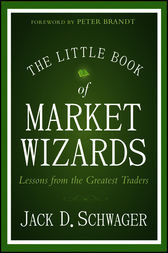 Basic Rules for Shorting Stocks
Basic Rules for Shorting Stocks
1. Shorting Momentum names is dangerous: Unless you are Superman, never step in front of a speeding locomotive
2. Valuation alone is insufficient reason to get short a stock — History teaches us that cheap stocks can get cheaper, dear stocks can get more expensive
3. ALWAYS work with a pre-determined loss – either a physical or mental stop loss — Never leave yourself open to infinite losses
4. Fundamentals tell you WHY to short something, not WHEN to short it. ALWAYS have some technical confirmation before shorting. Make a short selling wish list, then WAIT for technical confirmation. (We use Money Flow, Short Term Trend lines, Institutional Ownership, Analyst Ratings).
5. It is tough to be a contrarian: During Bull and Bear cycles, the Crowd IS the market.
You have to figure out two things:
…a) When the crowd is wrong — Doug Kass calls it “Variant Perception”
…b) When the crowd starts to get an inkling they are wrong
At the turns — not the major trends — is where contrarians clean up.
6. Look for Over-owned, Over-loved stocks: 95% Institutional ownership, All buys or Strong Buys (no sells), and 700% gains over the past few years are reasons to put names on your short selling wish list. (That is how my partner Kevin Lane found and shorted Enron and Tyco back in the 1990s).
7. Beware the “Crowded Short“– they tend to become targets of the squeeze!
8. You can use Options to either juice your short returns, or pre-define your risk capital (options)


 Too many traders believe that their last trade is a reflection of just how good of a trader they are (but they are the only ones who feel that way about themselves). This boils down to one word – expectation. If you expect to win all the time, or even the vast majority of the time, you’re setting yourself up for a lot of heartache. That frustration, though, is the very same force that will truly make your negative perception of yourself a reality. And even a good trade can be damaging if you let it warp your disciplined approach. The fact of the matter is that this is a game of odds, and should be played over a long period of time. Focus on the war – not the battle.
Too many traders believe that their last trade is a reflection of just how good of a trader they are (but they are the only ones who feel that way about themselves). This boils down to one word – expectation. If you expect to win all the time, or even the vast majority of the time, you’re setting yourself up for a lot of heartache. That frustration, though, is the very same force that will truly make your negative perception of yourself a reality. And even a good trade can be damaging if you let it warp your disciplined approach. The fact of the matter is that this is a game of odds, and should be played over a long period of time. Focus on the war – not the battle. Basic Rules for Shorting Stocks
Basic Rules for Shorting Stocks



